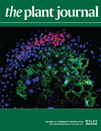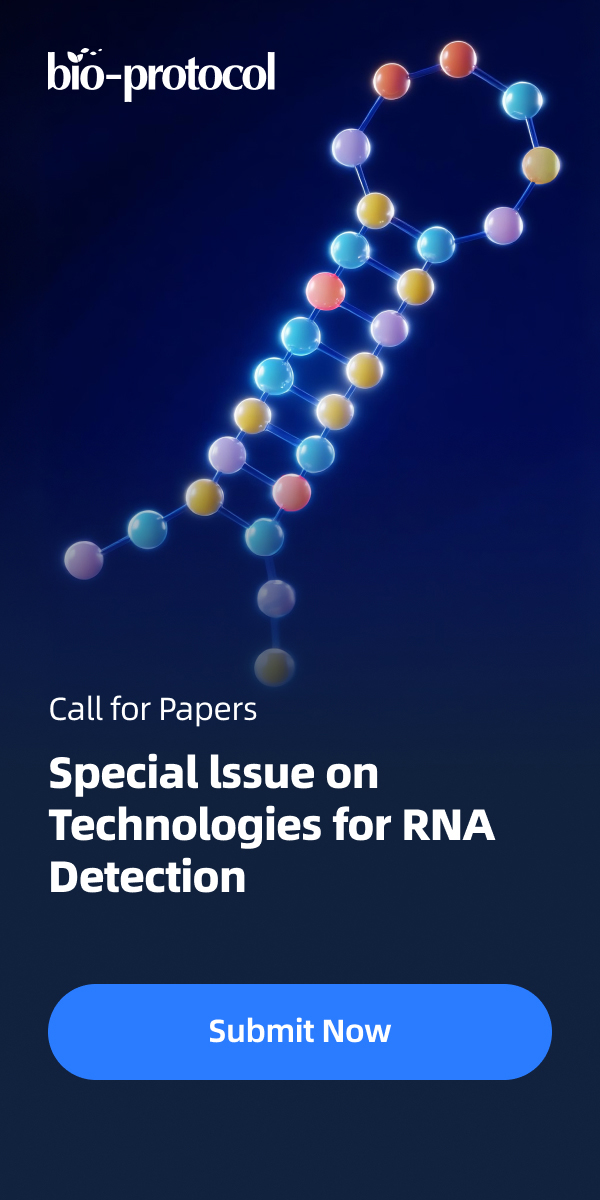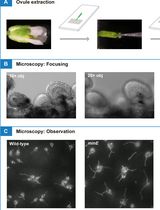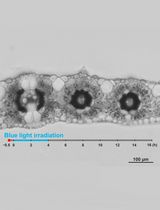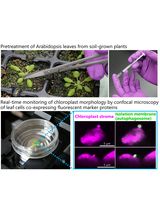- EN - English
- CN - 中文
Fluorescence Recovery after Photobleaching (FRAP) Assay to Measure the Dynamics of Fluorescence Tagged Proteins in Endoplasmic Reticulum Membranes of Plant Cells
荧光漂白恢复法(FRAP)进行植物细胞内质网膜中荧光标记蛋白的动力学分析
发布: 2014年10月20日第4卷第20期 DOI: 10.21769/BioProtoc.1268 浏览次数: 18686
评审: Hiromasa SaitohTie LiuArsalan Daudi
Abstract
In this protocol, we used fluorescence recovery after photobleaching (FRAP) to measure the influence that some mutations and drug treatment have on mobility of a green fluorescent protein (GFP)-fused viral transmembrane protein into endoplasmic reticulum membranes (Serra-Soriano et al., 2014). The proteins of interest were transiently expressed in Nicotiana benthamiana (N. benthamiana) epidermic cells by agro-infiltration. To minimize transient overexpression artifacts, fluorescence intensity values were gathered at 36 hpi using an inverted Zeiss LSM 780 confocal microscope. Only epidermic cells showing moderated expression levels and homogenous distribution through the ER of the GFP-tagged proteins were used for further experiments. To examine the role of actin polymerization in the mobilization of GFP-tagged proteins, we pretreated tissue samples either with latrunculin B, an inhibitor of actin polymerization, or with DMSO as control. The generated fluorescence recovery curves were used to obtain the percentage of maximum fluorescence recovery (MFR), which corresponds to the mobile fraction, and the half-time of maximum recovery (t1/2) values.
Materials and Reagents
- 3-4 weeks old Nicotiana benthamiana plants
- Agrobacterium tumefaciens (A. tumefaciens) C58C1 strain or similar transformed with the binary vector pMOG800 harboring the protein coding sequence. In our case they were:
- pMGFP-p7B encoding GFP-fused Melon necrotic spot virus (MNSV) p7B
- pMGFP-p7B [D7AP10A] encoding GFP-fused MNSV p7B carrying D7AP10A mutation
- pMGFP-p7B [K49A] encoding GFP-fused MNSV p7B carrying K49A mutation
- pMGFP-KDEL encoding a GFP engineered to be targeted to the ER lumen
- pMGFP-p7B encoding GFP-fused Melon necrotic spot virus (MNSV) p7B
- Yeast extract (Difco, catalog number: 212750 )
- Tryptone (Difco, catalog number: 211705 )
- Sodium chloride (NaCl) (Panreac Applichem, catalog number: 131659 )
- Acetosyringone (Sigma-Aldrich, catalog number: D134406 )
- MES (Sigma-Aldrich, catalog number: M8250 )
- Magnesium chloride (MgCl2) (Sigma-Aldrich, catalog number: M9272 )
- Antibiotics
- Mowiol® 4-88 (Sigma-Aldrich, catalog number: 81381 )
- Dabco® 33-LV (Sigma-Aldrich, catalog number: 290734 )
- Tris base (Roche Diagnostics, catalog number: 03118142001 )
- Tris-HCl (1 M, pH 5.6)
- Immersion oil Immersol 518 F (ZEISS, catalog number: 444960-0000-000 )
- Latrunculin B (Sigma-Aldrich, catalog number: L5288 )
- 25 µM Latrunculin B solution in 10 mM DMSO
- LB medium (see Recipes)
- Agrobacterium infiltration buffer (see Recipes)
- Mowiol mounting medium (see Recipes)
Equipment
- 28 °C growing chamber
- 15 ml culture tubes
- Swinging centrifuge rotor for 15 ml tubes
- 1.5 ml tubes (standard Eppendorf tubes or similar)
- BioPhotometer plus (Eppendorf)
- 1 ml syringes without needle
- Plant growing chamber
- Fine paddle forceps
- Petri culture dishes 35 x 10 mm
- Microscope slides 76 x 26 mm (Menzel-Gläser, catalog number: AA00000112E )
- Microscope cover slips 24 x 24 mm Nr. 1 (Menzel-Gläser, catalog number: BB024024A1 )
- Adhesive one-sided tape
- A cork borer (one centimeter diameter) or similar cutting device such as a scalpel blade.
- An inverted confocal microscope (ZEISS, model: LSM 780)
- Plan-Apochromat 63x/1.40 oil objective
Software
- Graphpad prism software (http://www.graphpad.com)
- MS Excel
Procedure
文章信息
版权信息
© 2014 The Authors; exclusive licensee Bio-protocol LLC.
如何引用
Navarro, J. A., Serra-Soriano, M. and Pallás, V. (2014). Fluorescence Recovery after Photobleaching (FRAP) Assay to Measure the Dynamics of Fluorescence Tagged Proteins in Endoplasmic Reticulum Membranes of Plant Cells. Bio-protocol 4(20): e1268. DOI: 10.21769/BioProtoc.1268.
分类
植物科学 > 植物细胞生物学 > 细胞成像
细胞生物学 > 细胞成像 > 活细胞成像
细胞生物学 > 细胞成像 > 荧光
您对这篇实验方法有问题吗?
在此处发布您的问题,我们将邀请本文作者来回答。同时,我们会将您的问题发布到Bio-protocol Exchange,以便寻求社区成员的帮助。
Share
Bluesky
X
Copy link


